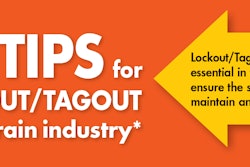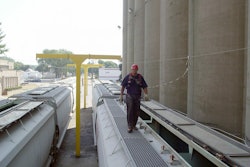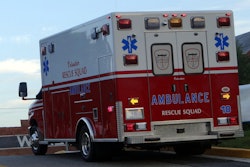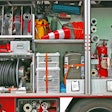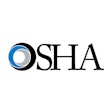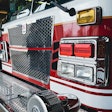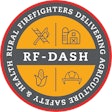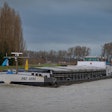
The Occupational Safety and Health Administration (OSHA) has started enforcing changes to its Instance-By-Instance (IBI) citation policy that may mean larger fines for serious violations of the Occupational Safety and Health Act (OSH Act) standards.
Many of the standard violations coming under more scrutiny are some of the most cited violations by OSHA inspectors and present in the grain handling and feed manufacturing operations. This means that an OSHA inspection could lead to significantly higher fines than in the past.
OSHA's IBI citation policy allows inspectors to issue separate citations and penalties for each instance of non-compliance related to certain violations of the OSH Act standards With the policy change, OSHA’s Regional and Area Offices can cite and penalize employers for each machine, location, entry, or employee found to be in violation of the standards.
For example, if OSHA concludes a feed mill that had five different pieces of equipment lack guarding that exposes employees to workplace hazards, OSHA may now cite the employer for five separate serious machine-guarding violations rather than grouping them together in one serious violation. The maximum penalty for a single serious violation is now more than $15,000; five separate machine-guarding citation items could result in a more than $60,000 monetary penalty.
“High-gravity" violations being targeted
Previously, the IBI policy was limited to willful-egregious violations, which required a higher standard of proof. However, the new policy expands the scope and allows OSHA to issue IBI citations for "high-gravity" serious violations. The Memorandum OSHA released on Jan. 26,2023 outlined the specific violations that will be more heavenly targeted by the IBI update.
Serious violations include:
- Fall Protection: OSHA's general industry standard for fall protection (29 CFR 1910.23) requires employers to provide fall protection systems for workers on walking or working surfaces with unprotected sides or edges that are 4 feet or more above a lower level.
- Trenching: Compliance with OSHA's 29 CFR 1926 Subpart P- Excavations, aims to protect workers involved in digging trenches or excavations, to mitigate the dangers of serious hazards, including cave-ins, falling objects, hazardous atmospheres, and more.
- Machine Guarding: OSHA's Machine Guarding standard (29 CFR 1910.212), sets requirements for protecting workers from hazardous machine parts and operating mechanisms. The standard aims to prevent contact with moving parts that can cause severe injuries, such as amputations, fractures, or lacerations.
- Respiratory protection: OSHA's Respiratory Protection Standard (29 CFR 1910.134), outlines requirements for employers to protect workers from respiratory hazards in the workplace.
- Permit required confined spaces: OSHA's Permit-Required Confined Spaces (PRCS) Standard (29 CFR 1910.146) sets forth regulations to protect workers who enter and work in confined spaces that present specific hazards. employee training, hazard evaluation and rescue and emergency services plan.
- Lockout/Tagout: OSHA's Lockout/Tagout (LOTO) Standard (29 CFR 1910.147), establishes procedures to safeguard workers from the unexpected energization or startup of machinery or equipment during maintenance or servicing activities.
- Other-than-serious violations of OSHA standards specific to recordkeeping: Under OSHA's recordkeeping regulations (29 CFR Part 1904), employers are required to maintain records of work-related injuries and illnesses using OSHA forms or an equivalent system. “Other-than-serious violations” refer to infractions that do not pose an immediate threat of serious harm or injury to workers but still involve non-compliance with OSHA's recordkeeping requirements. These violations typically relate to deficiencies or inaccuracies in the documentation and reporting of workplace injuries, illnesses, and incidents.
IBI citation policy to function as a deterrent
The new changes IBI citation policy is intended to increase deterrence for employers who meet specific criteria. OSHA’s Regional Administrators and Area Directors have the discretion to deviate from the Instance-By-Instance (IBI) citation policy when it does not further the goal of deterrence.
The decision to use IBI citations as a further deterrent will be based on:
- The employer's history of willful, repeat or failure to abate violations within the past five years
- Failure to report serious incidents or injuries as required by OSHA regulations
- Citations related to a fatality or catastrophe
- Recordkeeping citations related to injuries or illnesses caused by significant hazards
According to the memorandum, IBI citations will be applied by Regional Administrators and Area Directors when the relevant standard allows for it and when the instances of violation cannot be corrected through a single method. Thorough documentation is required for each instance of violation, including details about materials, equipment, facility conditions, human factors, and personal protective equipment. Regional Administrators and Area Directors must provide well-documented justifications for issuing IBI citations.
How IBI citations will be implemented
Guidelines for what violations warrant a separate penalty, are outlined in the OSHA Field Operations Manual (FOM), Chapter 6. Recordkeeping violations are processed and categorized following the guidelines in OSHA Directive CPL 02-00-080. The use of IBI citations also does not prevent the implementation of other OSHA initiatives, directives, or emphasis programs during the same inspection.
After the Regional Administrator reviews the proposed Instance-By-Instance (IBI) citations, there are additional steps for pre-issuance review:
- Consultation with the Regional Office of the Solicitor (RSOL): Before issuing any IBI citations, the Regional Office of the Solicitor should be consulted. This is to ensure legal considerations are addressed.
- National Office approval for high penalties: If the proposed total penalty for the IBI citations exceeds a certain threshold requiring National Office approval, the process outlined in the memo for Processing Significant and Novel Enforcement Cases should be followed.
- Proper coding in OIS: All inspections proposing IBI serious/other-than-serious (OTS) citations should be coded as "N 13 IBI Serious/OTS" under the Additional Codes in the OSHA Information System (OIS).
Once the IBI citations are issued, OSHA will release a press release to communicate the enforcement actions taken and to act as a further deterrent. As always, make sure your facility is following all relevant OSHA standards, and creating a good record to back up your safety policies.
.jpg?auto=format%2Ccompress&crop=faces&fit=crop&h=48&q=70&w=48)

